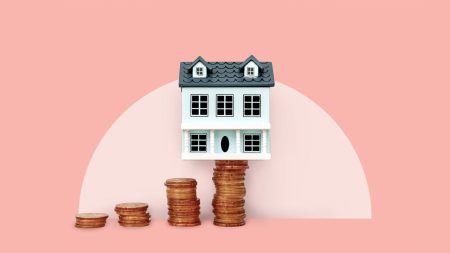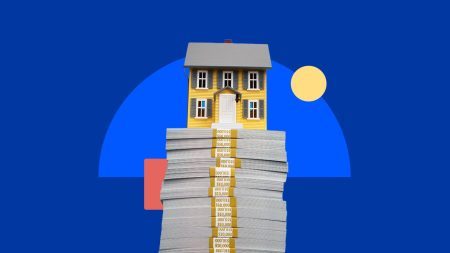Trying to save for a house and retirement at the same time can feel like running two marathons at once.
Many people, especially millennials and Gen Z, are getting crushed under the weight of both goals. On the one hand, homeownership is still a powerful tool to build long-term wealth and gain financial stability. On the other hand, ignoring your retirement accounts early on can mean missing out on years of compounding growth.
So how do you juggle both goals without burning out? Here’s what financial experts have to say.
5 tips to balance saving for a home and for retirement
1. Be realistic about your goals
Saving for a home and retirement at the same time might feel out of reach. The key is to approach both goals strategically, with your current income, lifestyle and timeline in mind.
“Saving for both a home and retirement simultaneously is challenging, but absolutely possible,” said Daniel Goodman, CFP and owner of Good Better Best Financial Planning. “It comes down to being realistic about your goals and setting clear, achievable targets.”
You’ll need to ask yourself some hard questions, including:
- Can you actually afford to buy a home in the area where you want to live?
- Are your income and job security strong enough to cover not just the mortgage, but property taxes, insurance and inevitable repairs?
Be brutally honest about your timeline, too. You might want to buy a home in two years, but if your savings rate or salary says it’s more like five, you need to adjust your expectations.
Also, remember that owning a home isn’t always the best choice. After all, renting a home is cheaper than paying a mortgage on average in all 50 of the largest U.S. metros in 2025, according to Bankrate’s 2025 Rent vs. Buy Affordability Study. The same study found that nationally, an average mortgage payment costs 38 percent more per month compared to average rent.
If you move frequently, live in a high-cost city or simply don’t want the maintenance hassle, renting while investing more for retirement could be a smarter move.
Jay Zigmont, CFP and founder of Childfree Wealth, specializes in working with adults without children, and he recommends renting instead of owning a home.
“For my clients, renting allows flexibility and matches a lifestyle that is a bit more nomadic,” says Zigmont. “Buying a house is a choice, not a requirement.”
2. Save for both goals — the right way
One of the biggest mistakes people make is treating all of their savings the same. But the money you’re socking away for a down payment should be completely separate from your retirement contributions.
“Home savings should generally be kept liquid, safe and accessible within a shorter time horizon, typically two to five years,” says Goodman. “Retirement savings, on the other hand, can be invested more aggressively because of the longer timeline.”
Mixing the two strategies — like investing your down payment money in volatile stocks or raiding your 401(k) to help pay for a house — can leave you stressed and in a tough financial position if the market tanks or tax penalties kick in.
Keep the accounts separate. Keep the goals separate. Play the long game and the short game at the same time — but don’t confuse the two.
3. Pause or reduce retirement contributions (temporarily)
If you’re struggling to make progress on saving for a down payment while contributing to your retirement plan, it’s OK to adjust — but do so strategically.
At a minimum, continue contributing enough to get your employer’s 401(k) match. That match is essentially free money, and skipping it leaves cash on the table.
Once you’ve reached your down payment goal, increase your retirement contributions immediately. You might even consider setting a calendar reminder so you don’t forget to start contributing again. The key is to treat the reduction as temporary — not a permanent shift in priorities.
This approach allows you to focus on the near-term goal of homeownership without completely derailing your long-term retirement strategy.
4. Focus on your progress
It’s easy to feel like you’re not doing enough to reach your goals. Housing prices are high, and retirement calculators spit out seven-figure numbers that feel impossible. But dwelling on what you haven’t saved is a fast track to burnout.
Instead, focus on momentum.
“I encourage clients to regularly track their progress, focusing on the gains they’ve made rather than stressing about how much further they have to go,” says Goodman. “Small wins and steady progress build momentum and make it much easier to stay motivated.”
Track your progress by setting specific targets for both goals — like a set dollar amount for your down payment and an annual percentage for your retirement savings — then automate your contributions and check in monthly.
Use budgeting apps or spreadsheets to monitor your balances and growth, and set milestones to celebrate. Visualizing your progress keeps you motivated and helps you adjust quickly if you fall behind.
5. Be careful about using retirement funds for a home purchase
There are legal ways to use retirement funds for a home purchase, and for some, it’s one way to access the money they need for a down payment. About 9 percent of American homeowners say they have tapped their retirement savings to buy a house, according to Bankrate’s 2024 Down Payment Survey.
But experts caution you to do so thoughtfully if you have to and avoid it if you can.
“It typically only makes sense to tap retirement accounts for a home purchase if you’re over 59 ½ or if you’re a first-time homebuyer using the $10,000 penalty-free IRA or Roth IRA withdrawal,” says Craig Toberman, CFP and partner at Toberman Becker Wealth. “Even then, early withdrawals reduce your long-term compounding potential.”
If you have a Roth IRA, you can withdraw up to $10,000 of earnings penalty-free and tax-free for a first-time home purchase. But by doing so, you’re losing future tax-free growth on that money.
With a traditional IRA, that same $10,000 limit applies, but you’ll owe income tax on the withdrawal. And if you’re thinking about borrowing from your 401(k), tread carefully. You’ll have to repay it within five years or risk penalties and taxes — plus, you miss out on gains while that money is out of the market.
“If someone chooses this path, they should clearly understand the trade-offs, especially around potential tax implications and the loss of compounding interest,” says Goodman.
Bottom line
You don’t have to choose between buying a home and saving for retirement — but you do need a game plan. Keep the goals separate, be brutally honest about what you can afford and track your progress along the way. Stay flexible and focus on consistent progress — not perfection.
Editorial Disclaimer: All investors are advised to conduct their own independent research into investment strategies before making an investment decision. In addition, investors are advised that past investment product performance is no guarantee of future price appreciation.
Why we ask for feedback
Your feedback helps us improve our content and services. It takes less than a minute to
complete.
Your responses are anonymous and will only be used for improving our website.
Help us improve our content
Read the full article here









